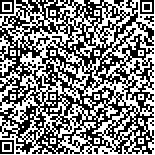| 引用本文: |
邓石峰,余雨荷,刘笑萌,艾坤,许明,石磊,张泓.电针对完全性骶髓损伤神经源性膀胱大鼠尿流动力学及逼尿肌组织中MLCK、MLC、p-MLC的影响[J].湖南中医药大学学报,2020,40(6):727-731[点击复制] |
|
| |
|
|
| 本文已被:浏览 2374次 下载 586次 |
| 电针对完全性骶髓损伤神经源性膀胱大鼠尿流动力学及逼尿肌组织中MLCK、MLC、p-MLC的影响 |
| 邓石峰,余雨荷,刘笑萌,艾坤,许明,石磊,张泓 |
| (湖南中医药大学针灸推拿学院, 湖南 长沙 410208) |
| 摘要: |
| 目的 通过观察电针“次髎”“三阴交”“中极”穴对完全性骶髓损伤神经源性膀胱(neurogenic bladder,NB)模型大鼠尿流动力学及逼尿肌组织中肌球蛋白轻链激酶(myosin light chain kinase,MLCK)、肌球蛋白轻链(myosin light chain,MLC)和磷酸化肌球蛋白(phosphorylated myosin,p-MLC)表达的影响,探究电针治疗完全性骶髓损伤后NB的可能机制。方法 48只健康雌性SD大鼠随机分为两组,一组随机分为空白组和假手术组各12只,剩余大鼠采用改良Hassan Shaker脊髓横断法制成骶髓损伤NB大鼠模型,成模后随机分为模型组和电针组各12只,电针组大鼠术后第20天取双侧“次髎”“三阴交”及“中极”进行电针干预,连续10 d,1次/d,20 min/次,其余大鼠不做干预处理;干预结束后对比观察各组大鼠尿流动力学检测结果,HE染色后光镜下观察各组大鼠逼尿肌组织形态学变化,Western blot法比较逼尿肌组织中MLCK、MLC、p-MLC蛋白表达情况。结果 (1)与空白组、假手术组相比,模型组大鼠漏尿点压力明显下降(P<0.01),膀胱最大容量和顺应性显著增大(P<0.01);与模型组相比,电针组大鼠漏尿点压力显著升高(P<0.01),膀胱最大容量和顺应性降低(P<0.05或P<0.01)。(2)光镜下空白组、假手术组逼尿肌形态结构正常,模型组肌纤维萎缩严重、大量的间质结构填充,电针组肌纤维轻度萎缩。(3)与空白组、假手术组相比,模型组逼尿肌中MLCK、MLC、p-MLC的含量显著降低(P<0.01);与模型组相比,电针组逼尿肌中MLCK、MLC、p-MLC蛋白含量增高(P<0.05或P<0.01)。结论 电针穴位“次髎”“三阴交”及“中极”能够减轻完全性骶髓损伤NB模型大鼠逼尿肌萎缩、提高漏尿点压力、降低膀胱最大容量和顺应性从而改善膀胱排尿功能,通过提高逼尿肌组织中MLCK、MLC、p-MLC含量从而增加膀胱逼尿肌的收缩能力可能是电针产生治疗效应的机制之一。 |
| 关键词: 骶髓损伤 神经源性膀胱 电针 尿流动力学 肌球蛋白轻链激酶 肌球蛋白轻链 磷酸化肌球蛋白 |
| DOI:10.3969/j.issn.1674-070X.2020.06.017 |
| 投稿时间:2020-01-16 |
| 基金项目:国家自然科学基金面上基金项目(81874510);湖南省教育厅科学研究项目-创新平台开放基金项目(17K071)。 |
|
| Effects of Electroacupuncture on Urodynamics and MLCK, MLC, p-MLC in Detrusor Tissue of Neurogenic Bladder Rats with Complete Sacral Cord Injury |
| DENG Shifeng,YU Yuhe,LIU Xiaomeng,AI Kun,XU Ming,SHI Lei,ZHANG Hong |
| (College of Acupuncture and Massage, Hunan University of Chinese Medicine, Changsha, Hunan 410208, China) |
| Abstract: |
| Objective To explore the possible mechanisms of electroacupuncture in treating neurogenic bladder after complete sacral cord injury by observing the effects of electroacupuncture at Ciliao (BL32), Sanyinjiao (SP6), Zhongji (RN3) acupoints on urodynamics and myosin light chain kinase (MLCK), myosin light chain (MLC), phosphorylated myosin (p-MLC) in detrusor tissue of the rats with neurogenic bladder (NB) after complete sacral cord injury. Methods A total of 48 healthy Sprague-Dawley female rats were randomly divided into 2 groups. One group was randomly divided a blank group and a sham operation group, with 12 rats in each group. The remaining rats were made into NB model of complete sacral spinal cord injury by modified Hassan Shaker spinal cord transection method, and they were randomly divided into a model group and an electroacupuncture group after molding, with 12 rats in each group. On the 20th day after operation, only the rats in the electroacupuncture group were given electroacupuncture at Ciliao (BL32), Sanyinjiao (SP6), Zhongji (RN3) for 10 days, once a day, 20 min per time. The other rats were not intervened. After the intervention, the urodynamic test results of each group of rats were compared. After HE staining, the morphological changes of the detrusor muscle tissue of each group were observed under light microscope. Western blot was used to compare the expression of MLCK, MLC, p-MLC proteins in the detrusor muscle tissue. Results (1) Compared with the blank group and the sham operation group, the pressure of the leakage point in the model group decreased significantly (P<0.01), and the maximum capacity and compliance of the bladder increased significantly (P<0.01); Compared with the model group, the pressure of leakage point in the electroacupuncture was significantly increased (P<0.01), and the maximum bladder volume and compliance were decreased (P<0.05 or P<0.01); (2) Under the light microscope, the shape and structure of detrusor in the blank group and the sham operation group were normal. The muscle fibers were seriously atrophic and filled with interstitial structure in the model group and it was slightly atrophic in the electroacupuncture group. (3) Compared with the blank group and the sham operation group, the contents of MLCK, MLC and P-MLC in detrusor muscle of the model group were significantly reduced (P<0.01); and compared with the model group, the contents were increased in the electroacupuncture group (P<0.05 or P<0.01). Conclusion Electroacupuncture at Ciliao (BL32), Sanyinjiao (SP6), Zhongji (RN3) acupoint can reduce the detrusor atrophy, increase the pressure of leakage point, reduce the maximum capacity and compliance of bladder, and finally improve the function of bladder micturition of the rats with NB after complete sacral cord injury. To increase the contents of MLCK, MLC and P-MLC in detrusor tissue and thus increase the contractility of detrusor may be one of the mechanisms of the therapeutic effect of electroacupuncture. |
| Key words: sacral cord injury neurogenic bladder electroacupuncture urodynamics myosin light chain kinase myosin light chain phosphorylated myosin |
|

二维码(扫一下试试看!) |
|
|
|
|




